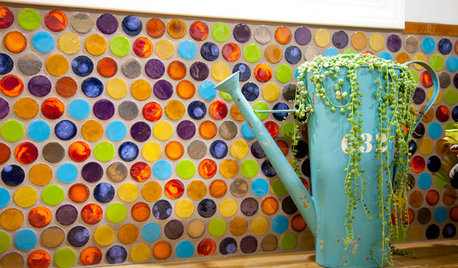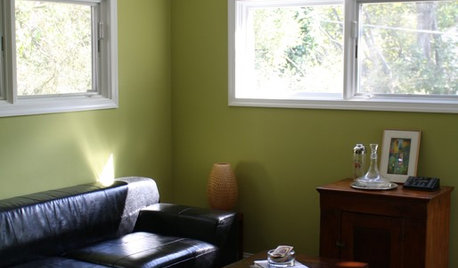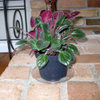Oo-oo, lookee what I just got!
korina
18 years ago
Related Stories

LIFEThe Polite House: How Can I Kindly Get Party Guests to Use Coasters?
Here’s how to handle the age-old entertaining conundrum to protect your furniture — and friendships
Full Story
HOME TECHThe Inevitable Future of Drones Around Your Home
As Google joins the push for airborne deliveries, it seems only a matter of time before neighborhoods are buzzing with drones. Is that OK?
Full Story
HOUZZ TV FAVORITESHouzz TV: Animals, Love and Color on a Florida Farm
Farm-fresh style is just right for this family of 6 — and their horses, dogs, cats, chickens, zebus, birds and pig
Full Story
GARDENING AND LANDSCAPINGHow to Make a Pond
You can make an outdoor fish paradise of your own, for less than you might think. But you'll need this expert design wisdom
Full Story
BATHROOM DESIGNDream Spaces: 14 Fabulous Indoor-Outdoor Bathrooms
Disappearing walls put these baths in Mother Nature’s lap, counting tranquil views and fresh air as the best luxuries of all
Full Story
TILE5 Head-Turning Tile Styles for Backsplashes and More
If plain subway tile would derail your bold decorating vision, these dashing tiles can help you arrive at a brilliant solution
Full Story
TASTEMAKERSA Designer Edits — and Adds — for Dramatic Effect
Interior designer Nancy Braithwaite’s new book shows how it’s possible to edit rooms of all styles to create their best look
Full Story
COLORSpeed-Dial Color Selection to Get the Best Result
You’ve belabored your color decisions and are still stuck. Here is how to evaluate your space and make choices that are right for you
Full Story
MOST POPULAR12 Key Decorating Tips to Make Any Room Better
Get a great result even without an experienced touch by following these basic design guidelines
Full StoryMore Discussions








dma1979
jon_d
Related Professionals
Londonderry Landscape Architects & Landscape Designers · Rancho Palos Verdes Landscape Architects & Landscape Designers · Rossville Landscape Architects & Landscape Designers · Athens Landscape Contractors · Broomfield Landscape Contractors · Essex Landscape Contractors · Mason Landscape Contractors · Milton Landscape Contractors · Rio Linda Landscape Contractors · Rockwall Landscape Contractors · White Bear Lake Landscape Contractors · Clearfield Landscape Contractors · Euless Siding & Exteriors · Massapequa Siding & Exteriors · Woodbridge Siding & ExteriorskorinaOriginal Author
korinaOriginal Author
korinaOriginal Author